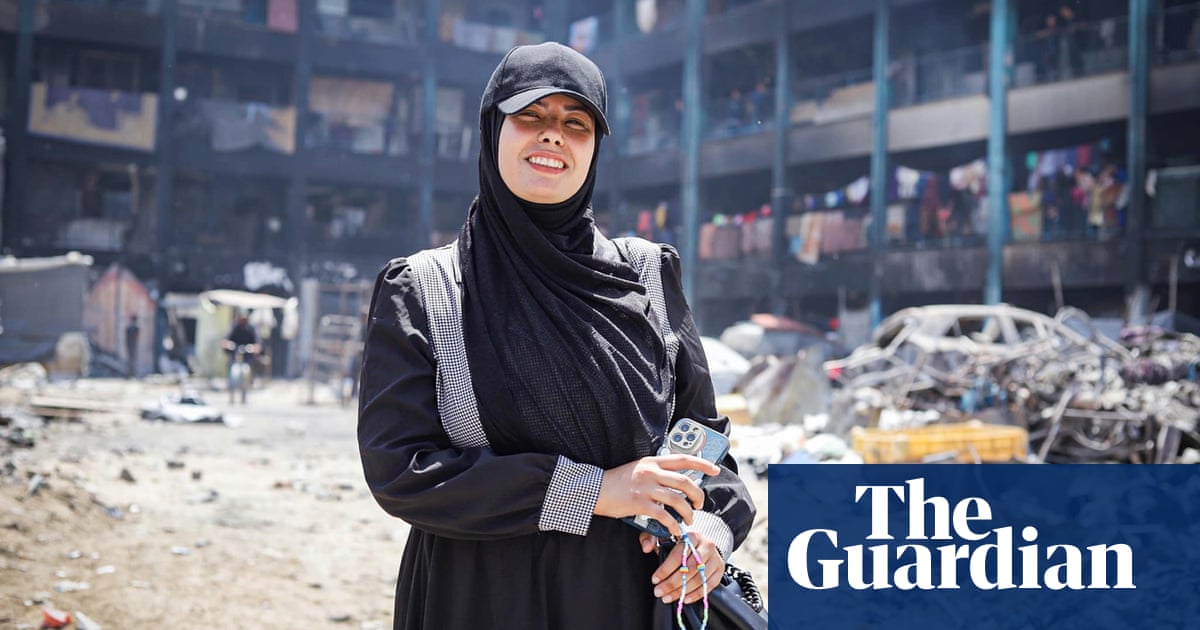In a workshop in Addis Ababa, Ethiopia’s capital, four writers wrapped in traditional white shawls sit in silent concentration, hunched over goat skin parchments, eyes straining in the dim natural light. Homemade bamboo pens in hand, ink pots by their sides, they are painstakingly writing out sacred texts in the religious language of Ge’ez – continuing an ancient manuscript writing tradition that has been practised in the Ethiopian highlands for millennia.
Occasionally, an editor comes over to discuss corrections. In an adjoining room, a team of artists paint colourful scenes of angels and saints.
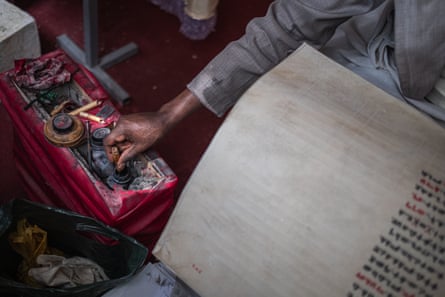
Elsewhere, craftspeople bind pages and hammer metal frames to decorate the manuscripts once they are finished, which will take months and in some cases years. Eventually, the texts will be shipped to churches and monasteries dotted across Ethiopia.
“We are trying to preserve the ancient ways,” says Ewantu Kassau, a 43-year-old priest who has been handwriting manuscripts since he was a teenager. “This is our heritage, our traditions.”
These traditions stretch back to the Axumite empire, a sea-faring state founded in the first century with deep links to Arabia and the Greek-speaking Levant that converted to Christianity in the fourth century.
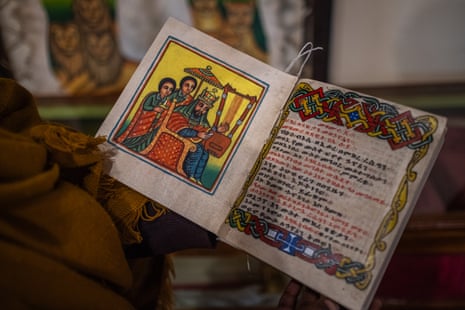
The oldest surviving Ethiopian manuscripts are the Garima Gospels, a set of two illuminated texts, brightly decorated with purple, green and blue paintings and written in about AD500. Today they are closely guarded by monks at the Abba Garima monastery in a remote part of Ethiopia’s mountainous Tigray region. Dozens of other churches in northern Ethiopia, many of them cut into rocky mountainsides, hold manuscripts that are also more than 1,000 years old.
The manuscripts produced by the Addis Ababa workshop, run by the Hamere Berhan Institute, could last just as long. “I hope, in 1,000 years, or more, people will find the books I wrote,” says Dawit Fantaye, who is writing a life of St George, a key figure in Ethiopian Orthodox Christianity.
“For that reason, our work has to be perfect.”
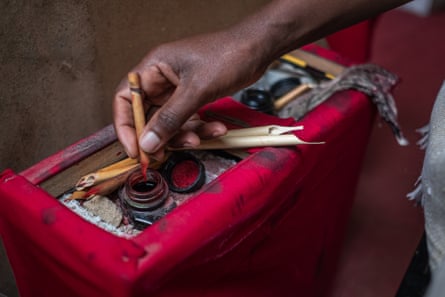
The workshop follows ancient methods, but with modern touches. It mixes black ink from soil, barley water and crushed leaves. The red ink and the paints are store-bought, but enriched with wax from acacia trees. The writers copy their texts from cheaply printed paper books, while the painters draw inspiration from Google Images.
Each year, the institute gets through 3,500 goat skins, which are donated by locals after they slaughter animals on feast days. These are cured, scrubbed clean and dried on metal frames at another site on the southern edge of Addis Ababa, over which the smell of the skins hangs heavily.
Since it was founded seven years ago, the Hamere Berhan Institute has produced about 315 manuscripts. They are made to order, but lately the institute has struggled to get them to customers. Many of these are religious institutions in regions beset by conflict, such as Amhara and Oromia, Ethiopia’s two most-populous states.
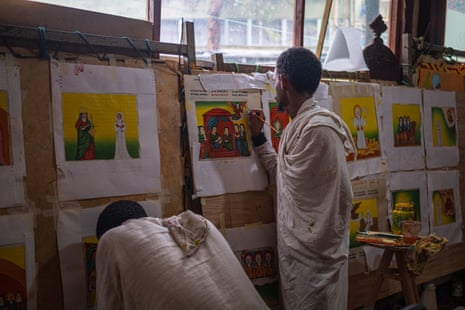
As a result, about a dozen completed, red leather-bound volumes sit in a cabinet at the back of the workshop, waiting to be shipped.
after newsletter promotion
The writing process might seem serene, but producing manuscripts is demanding. The writers at the institute work 12-hour shifts, six days a week. They write in a dead language, which is not spoken outside church services and has a complex verb system. Just writing the word “God” in Ge’ez takes about one minute, says Dawit, a 25-year-old who spent 10 years studying calligraphy at a monastery.
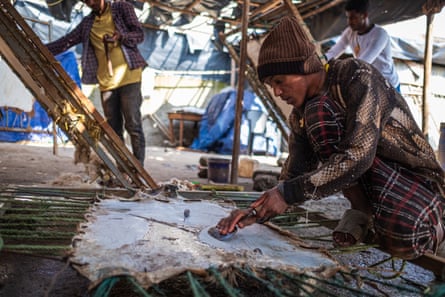
“It takes a lot of concentration and effort, but I enjoy it. This is my way of serving God,” he says.
This sense of religious mission is shared by Henok Desalegn, a painter currently illustrating the teachings of a 15th-century Ethiopian monk. “When I paint, it is like I can see the word of God,” he says. “And for people you cannot read, these images are very important.”
There is no definitive tally of institutions preserving this ancient craft. Yonas Yilma, a manuscript expert at the Ethiopian Heritage Authority, has counted at least five workshops across Ethiopia, but others may be continuing the practice tucked away in remote churches and monasteries.

These days most church services are conducted using paper books, says Yonas, but handwritten manuscripts still play an important role on major religious holidays such as Easter and Christmas. With their rich illustrations, “they are central to Ethiopian art history and also our intellectual tradition,” he says. “If you want to study Ethiopian culture, the manuscripts are the primary source.”
Yonas is confident the traditional practices will continue for many generations to come. “I can assure you, the Ethiopian manuscript tradition is very much still living,” he adds.


 1 week ago
15
1 week ago
15







